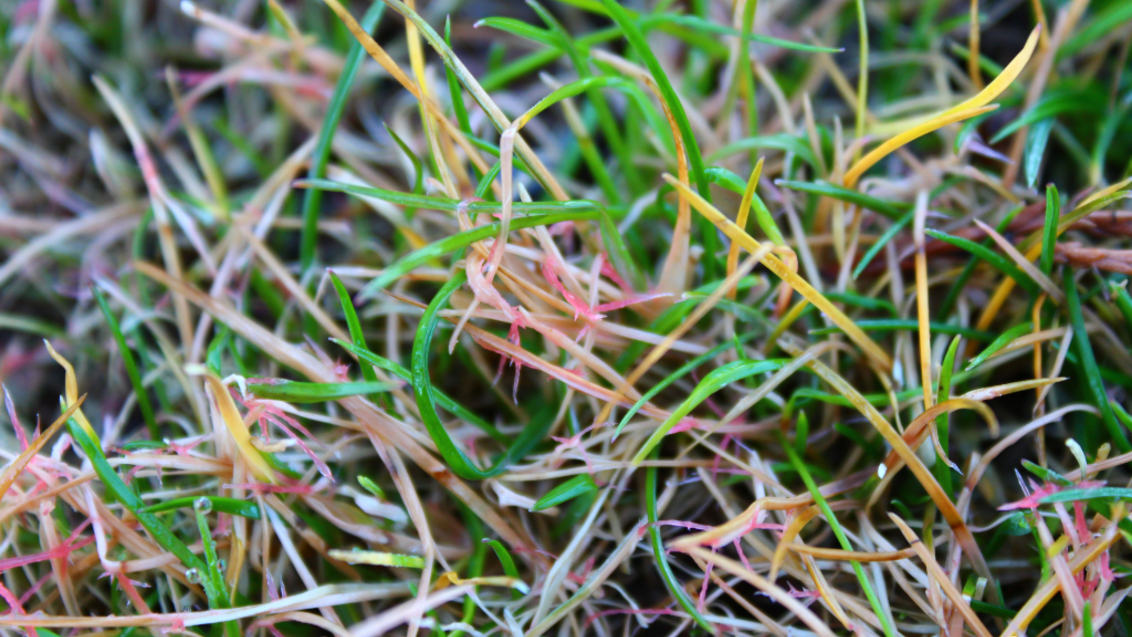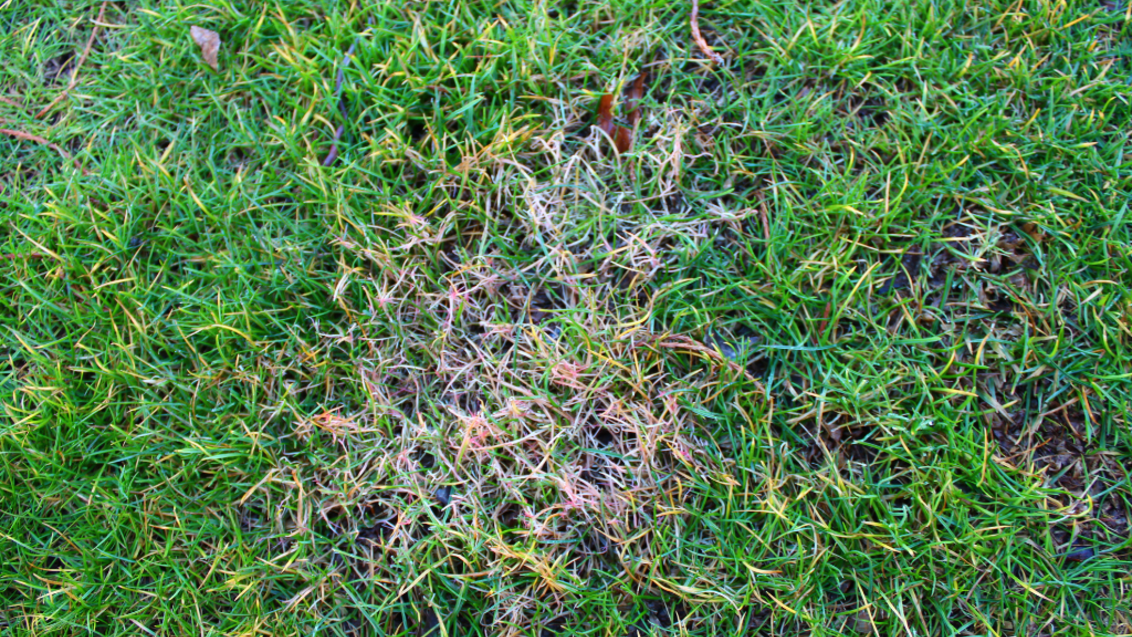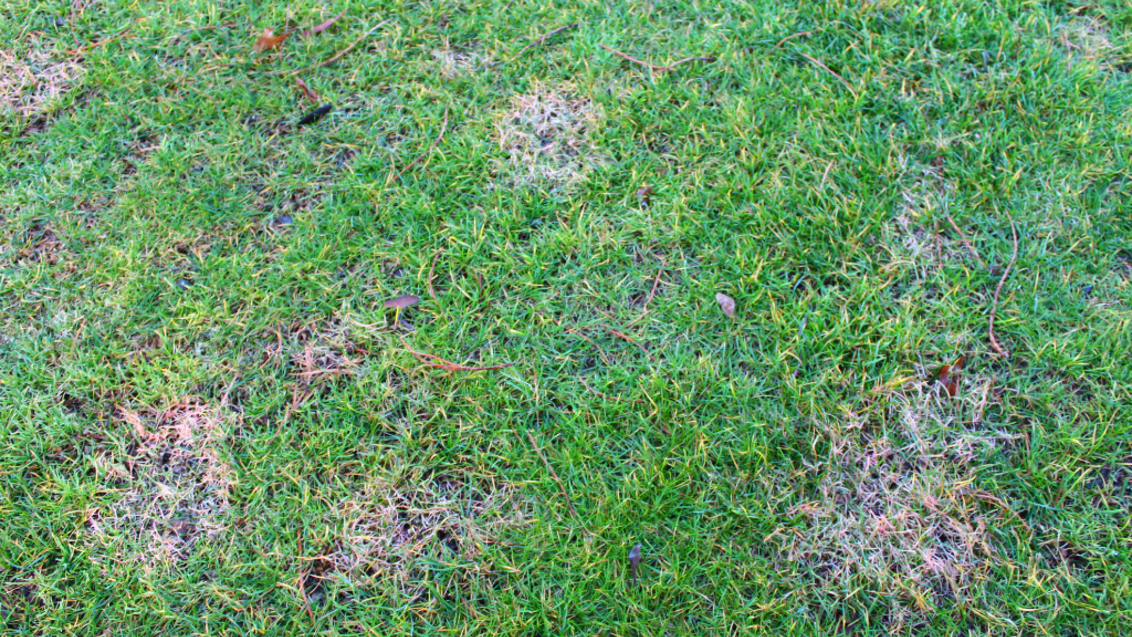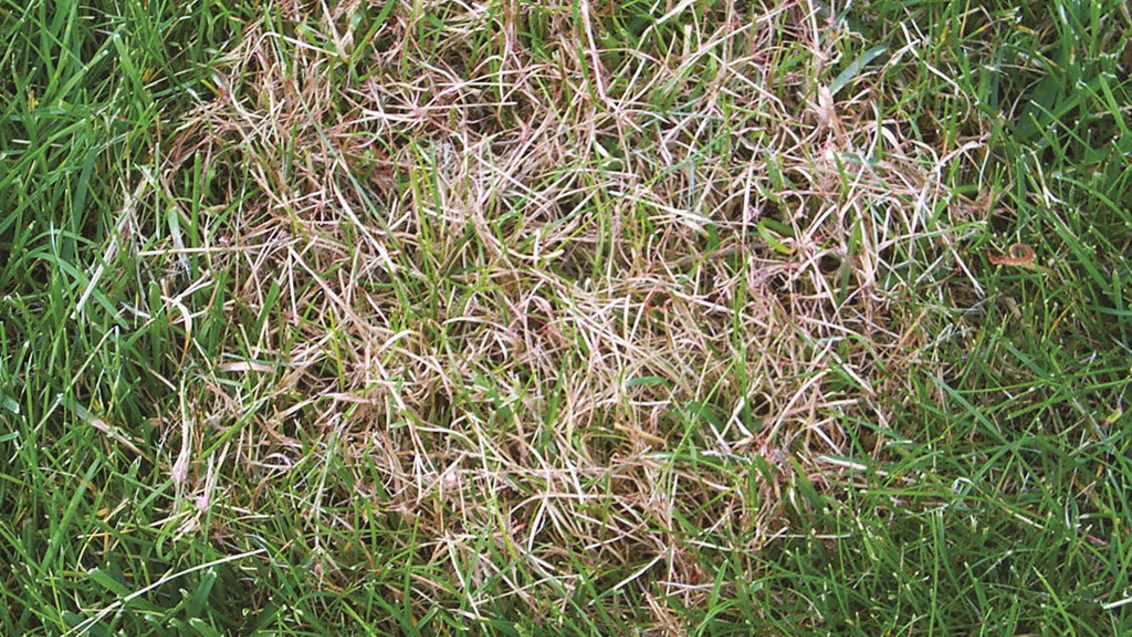Red Thread
Laetisaria fuciformis
Disease of Foliage
Susceptible Turf
Cool season turf
Symptoms
- Circular or irregularly shaped, small to large patches (5 to 15 cm) in diameter of infected grass become water-soaked and die rapidly
- First symptom is the tan colour of dead leaves.
- Dead leaves are interspersed amongst uninfected leaves giving an overall diffuse, scorched or ragged appearance to the patch.
- Only the foliage is infected and death usually proceeds from the leaf tips downwards.
- Pink to pale red or orange fungal growths (red threads) may extend up to 10 mm beyond the leaf tips.
- Pink, cottony flocks of mycelium may be produced.
- When red threads or flocks are present, the patched of blighted grass take on a reddish, pink or tan cast that is easily detected.
Conditions Favouring Disease
- Foliar wetness, heavy dews, light rains and fog resulting in more than 10 hours a day of foliar wetness for several consecutive days.
- Thrives in temperatures between 17°C to 29°C.
- Severe when potassium, phosphorus, calcium and nitrogen are deficient.
- Red Thread causes disease primarily during periods when grass is growing slowly as a result of low temperatures, drought or inadequate fertility.
Management Tips
- Mow turf frequently and collect clippings to remove diseased portions of the leaves.
- Maintain adequate nitrogen and a balanced fertility.
- Apply moderate to high amounts of phosphorous and potassium.
- Maintain the soil pH between 6.5 and 7.0.
- Reduce shade.
- Increase the air circulation to the turf.
- Irrigate turf deeply and as infrequently as possible.
- Avoid frequent watering in the late afternoon.
General Comments
This disease is particularly difficult to diagnose when Red Threads or cottony flocks are not present.




